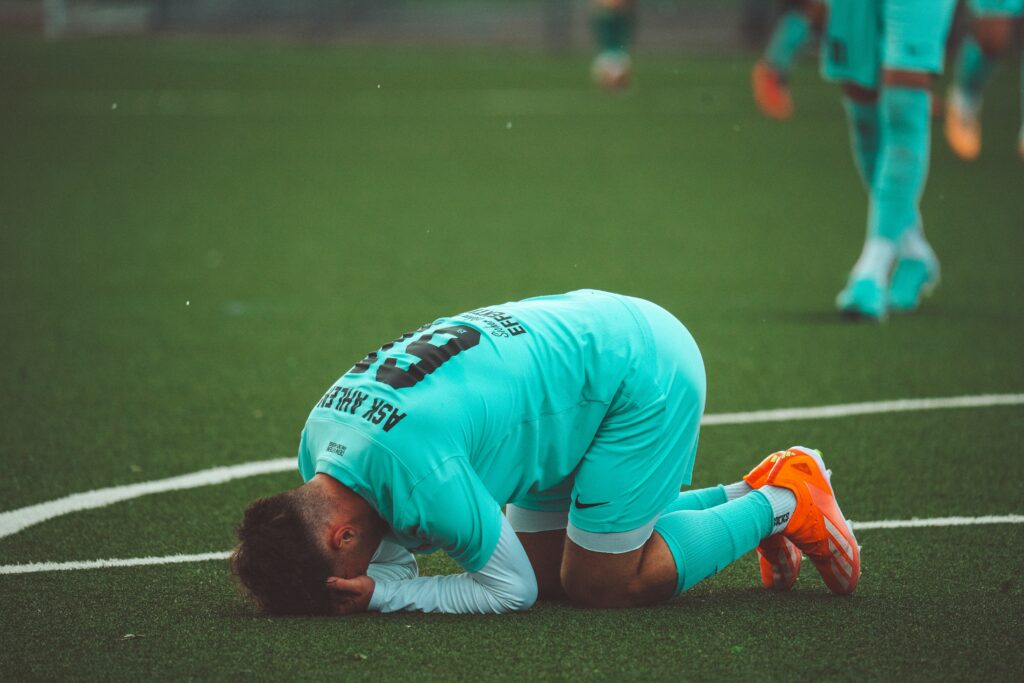As a football enthusiast, I know the importance of keeping your footballs clean and well-maintained for optimal performance. In this step-by-step guide, I’ll walk you through the essential tips and tricks to ensure your footballs are always game-ready. From removing dirt and grime to storing them properly, I’ve got you covered.
Cleaning and storing footballs may seem like a simple task, but there are specific techniques that can prolong the lifespan of your equipment. With my expertise in the field, I’ll share practical advice on how to maintain your footballs in top condition. Whether you’re a player, coach, or simply a football lover, this guide will help you keep your footballs in prime shape for every game.
Essential Supplies for Cleaning Footballs
To ensure proper maintenance of footballs, it’s crucial to use the right supplies when cleaning them. Here’s a breakdown of the essential items you’ll need:
Choosing the Right Cleaning Agents
When selecting cleaning agents for footballs, opt for mild soap or detergent to avoid damaging the ball’s material. Avoid harsh chemicals or abrasives that can wear down the ball’s surface over time. It’s best to stick to gentle cleaners that effectively remove dirt without compromising the ball’s quality.
Necessary Tools and Materials
Having the right tools and materials is key to keeping footballs in top condition. Here are the essential supplies you’ll need:
- Soft-bristled brush: Use a soft brush to scrub off dirt and debris without causing any damage to the ball.
- Clean cloth: Have a clean, lint-free cloth on hand to wipe down the surface of the ball after cleaning.
- Bucket of water: Fill a bucket with lukewarm water to create a soapy solution for cleaning the football.
- Mild soap or detergent: Choose a mild soap or detergent to clean the ball without causing any harm to its material.
- Towel: Keep a towel nearby to dry the ball thoroughly after cleaning to prevent moisture damage.
By utilizing these essential supplies when cleaning footballs, you can ensure that your equipment stays in top shape for longer, allowing for optimal performance on the field.
Step-by-Step Guide to Cleaning Footballs
Football maintenance is key to ensuring peak performance and durability of the equipment. Cleaning footballs regularly is crucial for their longevity. Here’s a straightforward guide on how to clean and store footballs effectively.
- Removing Dirt and Mud
I start by removing visible dirt and mud from the football’s surface. I use a soft-bristled brush to gently scrub off any debris or dirt particles. By doing this, I ensure that the football is clean and ready for the next steps in the cleaning process. - Applying Cleaner
Next, I apply a mild soap solution to the football. I mix mild soap with lukewarm water in a bucket to create a cleaning solution. Using a clean cloth, I dip it into the soapy water and gently wipe down the entire surface of the football. This helps to remove stubborn dirt and grime, leaving the football looking fresh and clean. - Wiping Down and Drying the Football
After cleaning the football with the soapy solution, I rinse the cloth thoroughly and wipe down the football to remove any soap residue. Once the football is clean, I use a dry towel to pat it dry and ensure that no moisture is left on the surface. Proper drying is essential to prevent any damage and maintain the integrity of the football.
Following these simple steps will help keep your football in excellent condition, ready for your next game. By maintaining a regular cleaning routine, you can extend the lifespan of your football and enjoy optimal performance on the field.
Best Practices for Storing Footballs

When it comes to maintaining footballs for optimal performance and durability, proper storage is key. Here are some best practices to ensure your footballs stay in top condition:
Ideal Conditions for Storage
I recommend storing footballs in a cool, dry place away from direct sunlight and extreme temperatures. Moisture and heat can damage the ball’s material, affecting its grip and longevity. Ideally, place the footballs in a well-ventilated area with consistent temperature and humidity levels to prevent deterioration.
Tips for Long-Term Storage
For long-term storage, I suggest inflating the football to the recommended pressure specified by the manufacturer to maintain its shape. Additionally, storing footballs in a clean and dust-free container or bag can help protect them from dirt and debris accumulation. Remember to check the footballs periodically and reinflate them if needed to prevent deflation over time. By following these storage tips, you can prolong the lifespan of your footballs and ensure they are ready for action whenever you hit the field.
Common Mistakes to Avoid
When it comes to cleaning and storing footballs, there are some common mistakes that can potentially damage the footballs or decrease their lifespan. By understanding and avoiding these pitfalls, you can ensure your footballs stay in great shape for longer. Here are some key mistakes to steer clear of:
Cleaning Do’s and Don’ts
- Do use gentle, mild soap and water for cleaning the surface of the football.
- Don’t use harsh chemicals or abrasive cleaners that can degrade the material of the football.
- Do clean the football regularly, especially after use in muddy or dirty conditions.
- Don’t soak the football in water or submerge it completely as this can damage the internal components.
- Do store footballs in a cool, dry place away from direct sunlight and extreme temperatures.
- Don’t leave footballs in a damp or humid environment as it can promote mold growth and damage the material.
- Do keep footballs properly inflated to the recommended pressure when storing them for a prolonged period.
- Don’t store footballs in a compressed or squashed position, as this can affect their shape and performance on the field.
By following these cleaning do’s and don’ts, as well as storage no-nos, you can maintain your footballs effectively and ensure they are always ready for peak performance on the field.

 Chelsea Haynes is a valued member of the Awesome Football Network team, where she excels as a skilled contributor and article writer. With a sharp eye for detail and a deep love for football, Chelsea produces compelling content that covers a diverse range of topics, including team dynamics, player performances, and game strategies. Her insightful articles are crafted to engage and inform readers, providing them with a deeper understanding of the sport.
Chelsea's expertise and dedication to football journalism enhance the quality of content at Awesome Football Network. Her contributions help keep the platform at the forefront of football news, ensuring that fans and professionals alike stay well-informed and connected to the latest developments in the world of football.
Chelsea Haynes is a valued member of the Awesome Football Network team, where she excels as a skilled contributor and article writer. With a sharp eye for detail and a deep love for football, Chelsea produces compelling content that covers a diverse range of topics, including team dynamics, player performances, and game strategies. Her insightful articles are crafted to engage and inform readers, providing them with a deeper understanding of the sport.
Chelsea's expertise and dedication to football journalism enhance the quality of content at Awesome Football Network. Her contributions help keep the platform at the forefront of football news, ensuring that fans and professionals alike stay well-informed and connected to the latest developments in the world of football.
